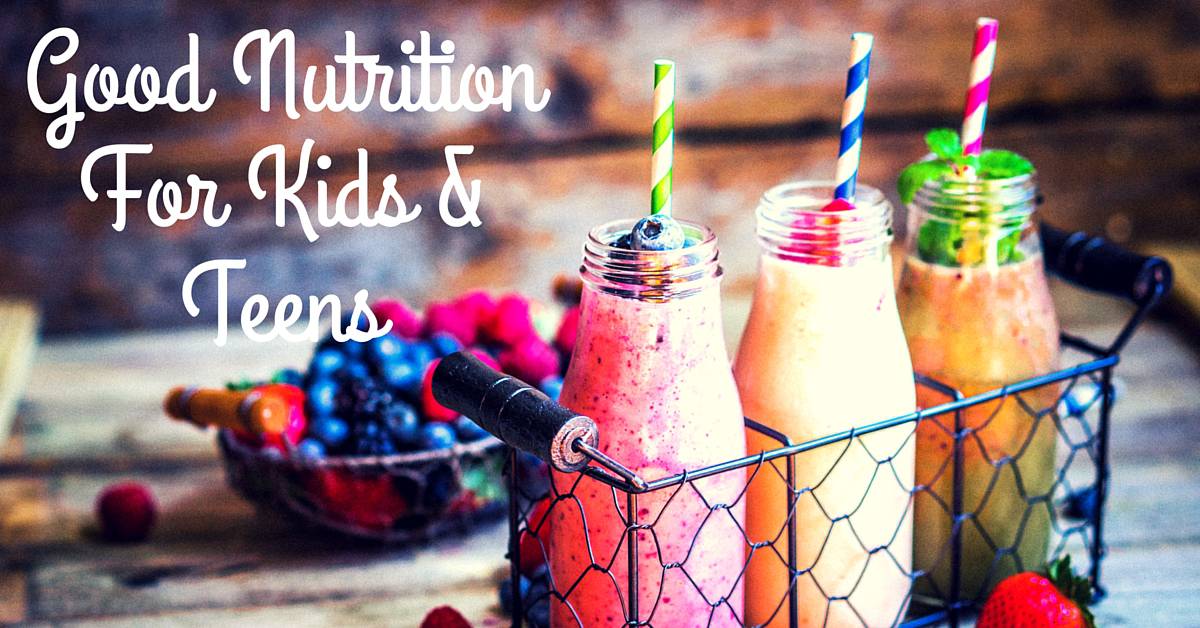
All parents want their children to be healthy. As elementary school aged children go through remarkable physical changes of all kinds, their food intake becomes a critical aspect of this growth and development. Recent research shows that nourishing food not only makes a child healthier, it makes him emotionally more stable, and it improves school performance. It appears then that paying attention to our children’s diets pays high dividends. If only our children thought so, too! Because children tend to rank their parents’ views on food along with their unpopular views on curfews, rock music, hair styles, etc., it is up to the parents to, first of all, be clever about insinuating nutritious foods into the family menus and, secondly, take a reasonable but hard line when other approaches fail.
Breakfast
A child in the classroom whose last meal was dinner the night before has gone about sixteen hours without food, and that child is hungry, whether he knows it or not. A nutritious breakfast will provide energy for several hours-until lunch, in fact. Is any kind of breakfast better than no breakfast at all? Unfortunately, no. A doughnut, for example, provides a quick rush of energy that lasts about 40 minutes, about the length of time it takes the youngster to get from the breakfast table to his classroom!
Traditionally, teachers schedule “heavy” subjects, such as reading and arithmetic, during the morning hours, and so it becomes even more important that the child’s brain be fueled. The following suggestions have proved helpful in sending youngsters off to school ready to team.
Offer options. “Here’s what’s for breakfast. You have two choices. Pick one of them.” Just be sure that both choices have high nutritive value.
Put the blender to good use. Concoct a shake or smoothie with milk, vanilla, and a couple of tablespoons of honey. There is an unlimited assortment of blended breakfast drinks with all sorts of combinations: orange juice, bananas, apple juice, wheat germ, etc. Eight ounces of such a drink served over shaved ice with a couple of slices of whole, wheat toast will keep any youngster on his toes until noon.
If the youngster likes cereal, dry or cooked, give it an extra boost with a sprinkling of wheat germ. chopped nuts, raisins, or other fruit.
Leftover pizza doesn’t make a bad breakfast. It’s more nutritious than any other fast food, and you can increase its nutrition by adding extra cheese.
Layer yogurt, fruit, and granola in glasses for a parfait look.
Try a breakfast buffet with sliced fresh fruits, finger food vegetables, hard-boiled eggs, whole-wheat muffins. The more colorful, the better, and kids love to help themselves.
Lunch
The sack lunch! Does the child give, trade, or throw most of it away? (The clue is if he comes home ready to eat anything and everything in the refrigerator!) It’s altogether possible that the youngster is jettisoning his sack lunch because he is bored to tears with it, so it’s time for the parents to get creative. One clever parent inserts a smaller bag labeled “this is for trading” into the larger bag, and it seems to work wonders! The following suggestions may help.
Apples and oranges certainly qualify on all counts-nutritious, no preparation, relatively inexpensive. But they’re also easy to toss in the garbage can! Get a couple of plastic containers with lids that stay on and fill them with fruit cocktail, applesauce, mandarin orange slices, yogurt, even popcorn or Crackerjacks.
Use cookie cutters to shape sandwiches, crinkle-cut carrots, stuff some celery. If your youngster is a peanut butter addict-and most are-add any of the following to peanut butter for a change from the tried and true peanut butter and jelly sandwich: chopped dates or nuts, raisins, bacon bits, applesauce, crushed pineapple.
Mix tuna fish or canned salmon with sliced cucumbers, sprouts, grated carrots hard boiled eggs, chopped celery, etc.
After School Snacks
Once a child has entered the primary grades, it is no longer possible for him to eat whenever he feels hungry, and it can be a long time between lunch and the final bell. Most youngsters arrive home wanting and needing an immediate energy boost. It’s a great opportunity to add some “in nutrients to the youngster’s diet. To many youngsters a snack automatically means something sweet; however, sugar should be removed from the diet as much as possible except for special occasions.
Post a “what’s inside for a snack” list on the refrigerator door and let the child help himself.
Select a special spot where the child will find either that day’s snack or a note telling him where to find it. (Sample: “You’ll find fresh orange juice popsicles in the freezer.”)
Keep a supply of trail mix in a moisture-proof container. The combinations are limitless: nuts, coconut shavings, dates, sunflower seeds, pretzel sticks, banana chips, etc.
Most youngsters like dried fruits, especially if they can spread them with peanut butter or a fruit butter.
Popcorn-youngsters love it as a snack, and it can also be sprinkled on soup.
Cheese, cheese, cheese-spread, melted or in chunks. Whole wheat crackers.
Dinner
The time-honored tradition of breakfast, lunch, and dinner seems the best way to ensure a balanced diet, but the fact is that we may not need three meals a day. A better solution for some families may be more frequent, lighter meals. And it really isn’t a matter of life and death if a family member misses dinner. No child ever starved to death because he was playing softball and forgot to come home for dinner. Common sense, flexibility, and creativity go a long way to make the evening meat pleasant.
Let the youngsters serve themselves In this way they can decide how much to put on their plates and can always take a second helping if they want it.
Children should be expected to taste every dish that’s been prepared. If they don’t like it, they don’t have to eat any more but it’s an excellent way to expand their food horizons.
Make food look attractive and interesting. One mother cuts liver into bite-sized pieces and sticks toothpicks in each piece. Her children eat the pieces lollipop-style with a great degree of gusto!
Involve your youngsters in the family menu. Let them suggest foods, familiar and unfamiliar, although some of their choices may need to be discussed in terms of whether or not they fit into the family budget.
Occasionally take your children to the grocery store. (Be sure to feed them and yourself before you go or your food bill will soar!) It’s a good place to give them choices. (“Do you want broiled chicken or fish for dinner? Peas or green beans? ” “Pick out some fruit for your lunches this week”) What you don’t buy is as important as what you do buy. If you don’t buy potato chips and sodas, your youngsters won’t be able to snack on them.
Turn off the television set. Make the dinner table a place for good conversation.
Junk Food
Most of the foods served in fast food restaurants have fat as their main source of calories. Even milk shakes are often nude with highly saturated coconut oil. In addition, their foods are usually low in iron, fiber, and vitamins, and extremely high in sodium. Unfortunately, youngsters are exposed to virtually thousands of junk food television commercials a year, and parents might as well accept the fact that occasionally their children are going to head for a fast food restaurant. However, they’ll survive, especially if their daily diet is nutritious.
Parent Tool Box
More from other sources:
More from Child Development Institute:
- Encouraging your child’s vegetable eating
- Reasons Why Children Should Avoid Fad Diets
- How to Encourage Your Teen to Make the Right Food Choices
- Supplements in Toddlers
- Back to School Nutrition – Why It Is Important for Your Child’s Success at School


